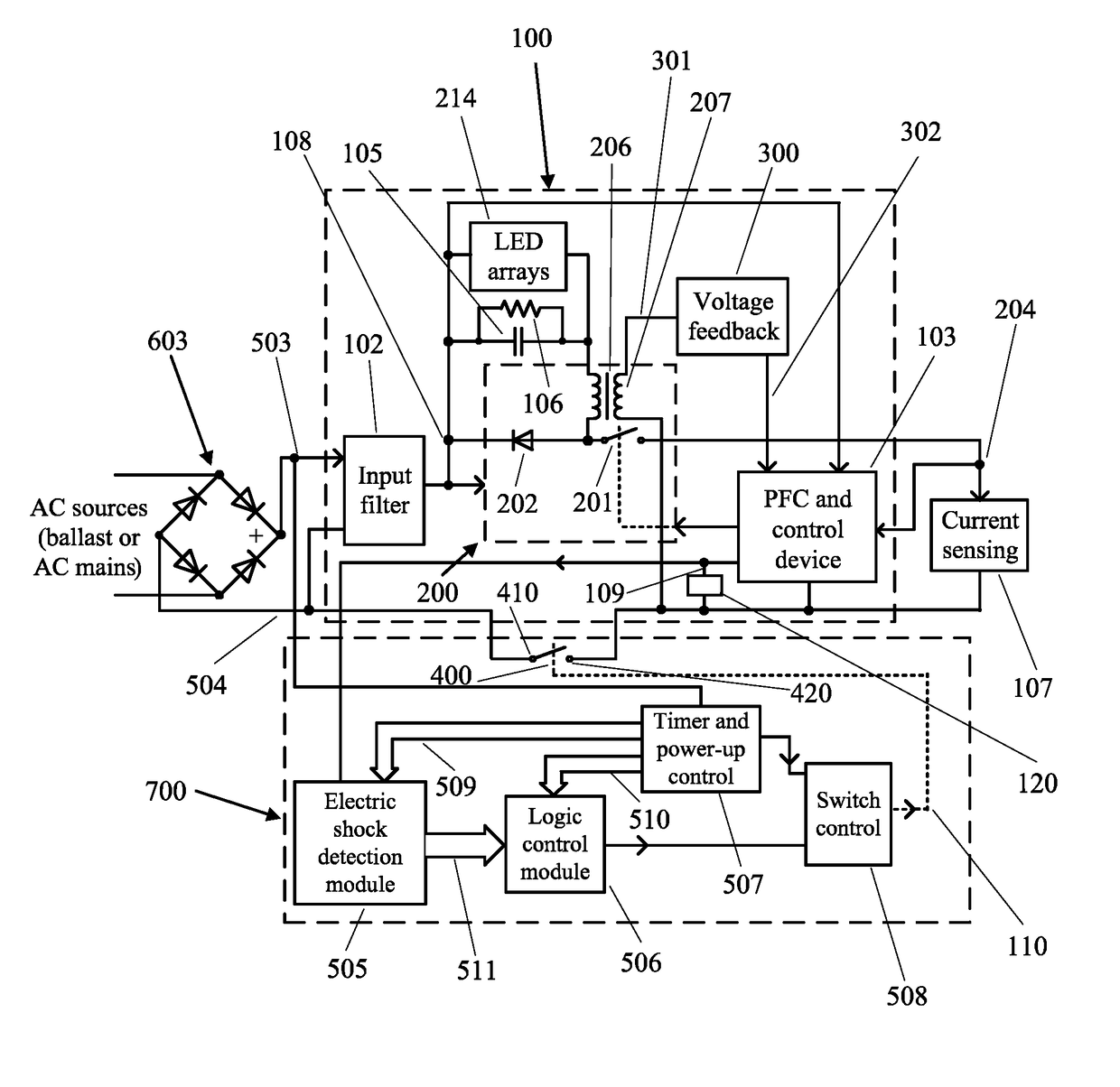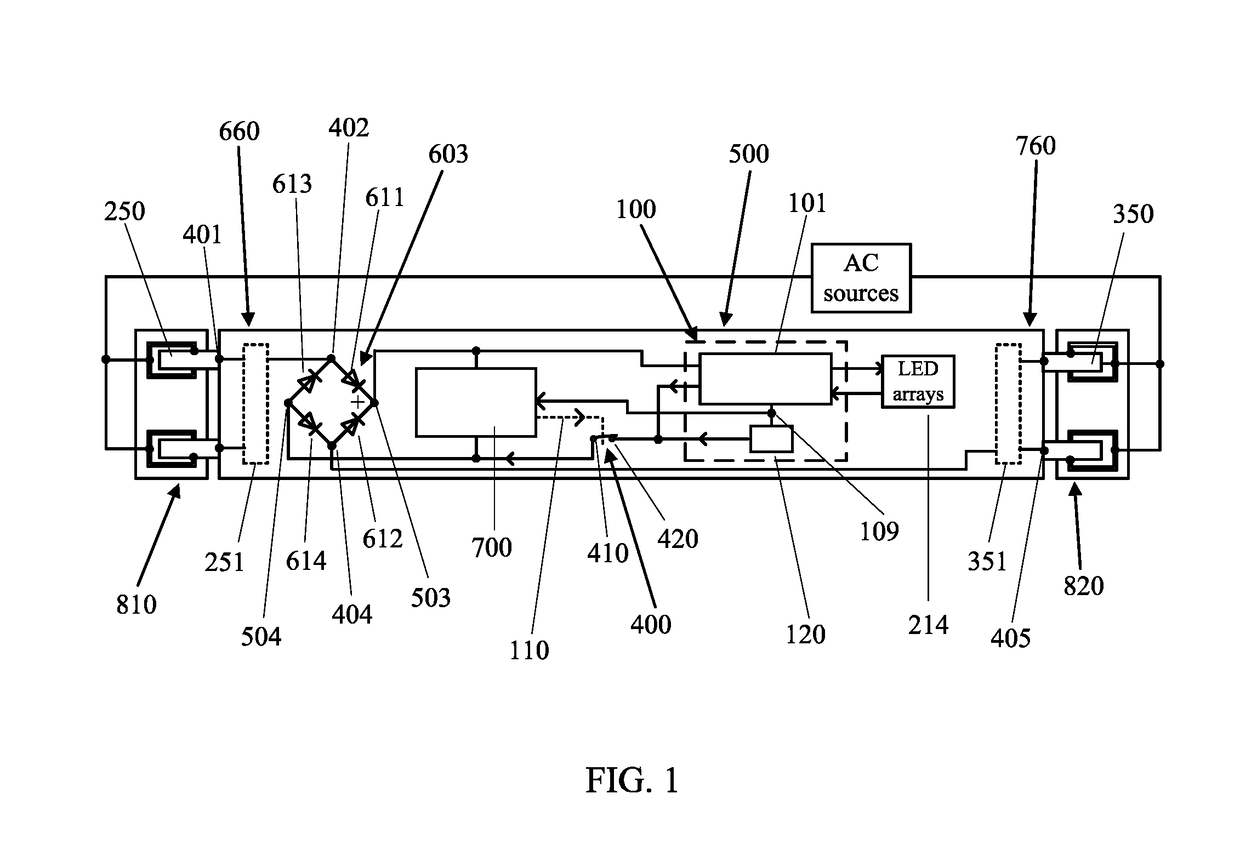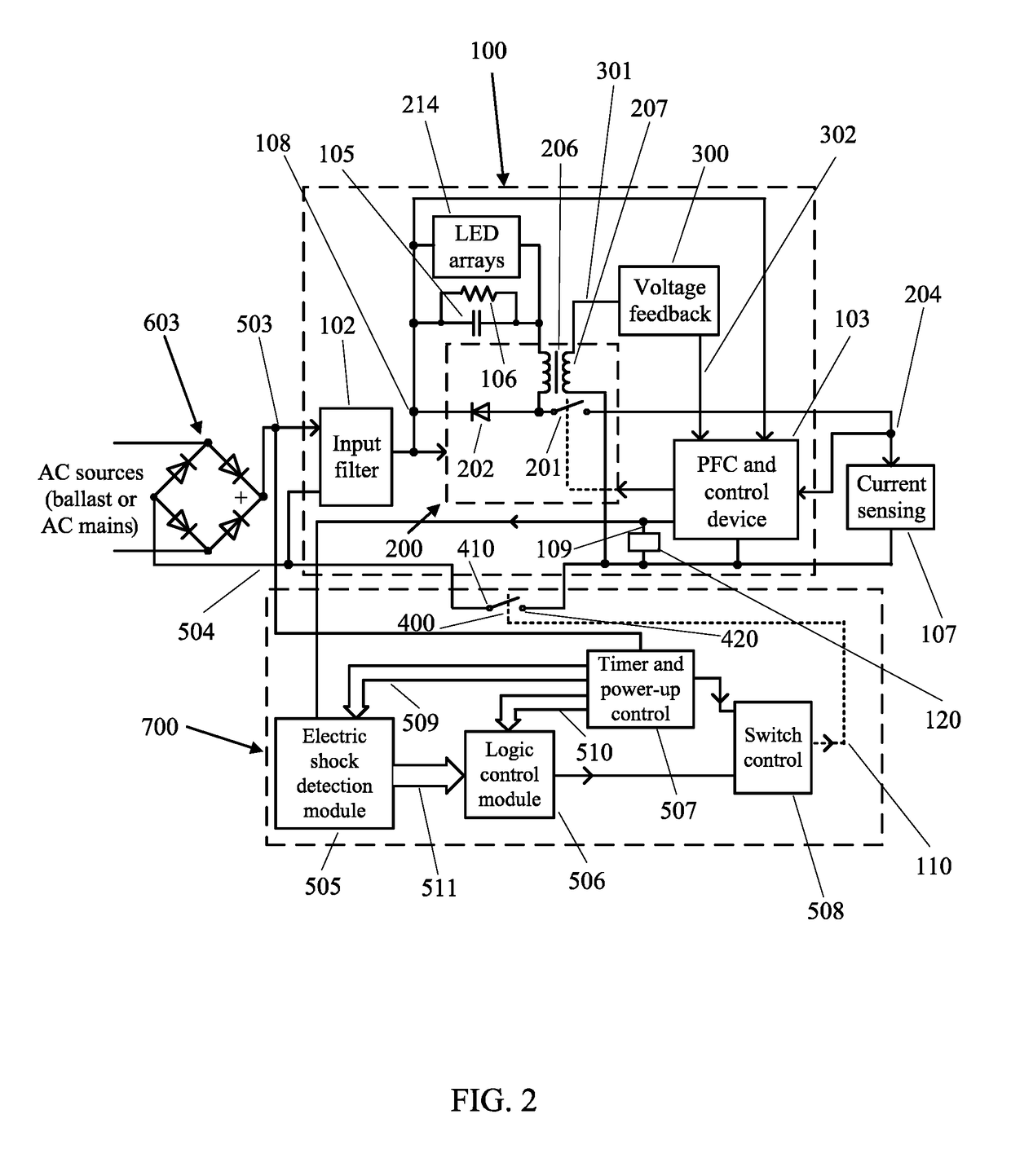Linear Solid-State Lighting With Electric Shock Prevention
- Summary
- Abstract
- Description
- Claims
- Application Information
AI Technical Summary
Benefits of technology
Problems solved by technology
Method used
Image
Examples
Embodiment Construction
[0019]FIG. 1 is an embodiment of an LLT lamp installed in lamp fixture sockets connected with alternate current (AC) sources according to the present disclosure. The LLT lamp 500 comprises a housing having two ends; two lamp bases 660 and 760 each having at least one electrical conductor 250 and 350 at each end of the housing; an electric current flow control module 700; a pair of electrical contacts 410 and 420 of at least one switch 400 controlled by the electric current flow control module 700; at least one rectifier 603 comprising diodes 611, 612, 613, and 614 interconnected at ports 402, 404, 503, and 504; an LED driving circuit 100 having a first and a second inputs 503 and 420; and LED arrays 214 disposed between the two ends of the housing with the LED arrays 214 connected to the LED driving circuit 100. The LLT lamp 500 may further comprise an interface module 251 and 351 for each lamp base configured to work with an electronic ballast for maximum compatibility. The interfa...
PUM
 Login to View More
Login to View More Abstract
Description
Claims
Application Information
 Login to View More
Login to View More - R&D
- Intellectual Property
- Life Sciences
- Materials
- Tech Scout
- Unparalleled Data Quality
- Higher Quality Content
- 60% Fewer Hallucinations
Browse by: Latest US Patents, China's latest patents, Technical Efficacy Thesaurus, Application Domain, Technology Topic, Popular Technical Reports.
© 2025 PatSnap. All rights reserved.Legal|Privacy policy|Modern Slavery Act Transparency Statement|Sitemap|About US| Contact US: help@patsnap.com



